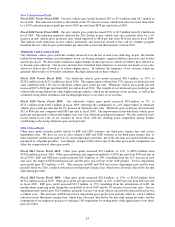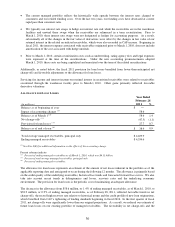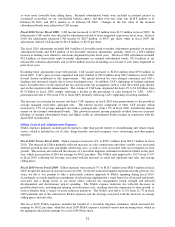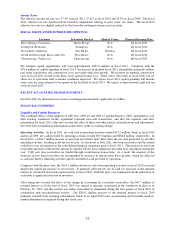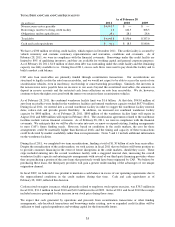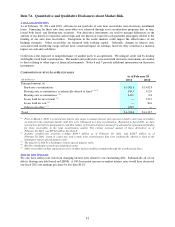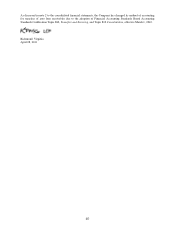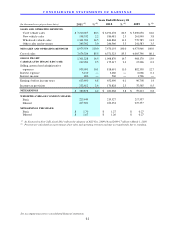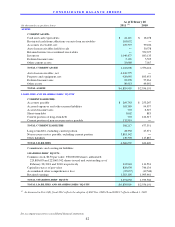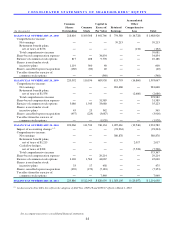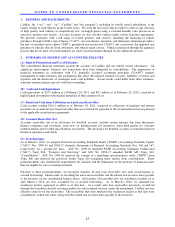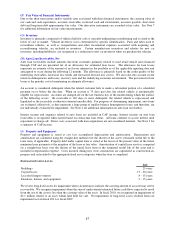CarMax 2011 Annual Report Download - page 47
Download and view the complete annual report
Please find page 47 of the 2011 CarMax annual report below. You can navigate through the pages in the report by either clicking on the pages listed below, or by using the keyword search tool below to find specific information within the annual report.
37
Item 7A. Quantitative and Qualitative Disclosures about Market Risk.
Auto Loan Receivables
As of February 28, 2011 and 2010, all loans in our portfolio of auto loan receivables were fixed-rate installment
loans. Financing for these auto loan receivables was achieved through asset securitization programs that, in turn,
issued both fixed- and floating-rate securities. Our derivative instruments are used to manage differences in the
amount of our known or expected cash receipts and our known or expected cash payments principally related to the
funding of our auto loan receivables. Disruptions in the credit markets could impact the effectiveness of our
hedging strategies. Other receivables are financed with working capital. Generally, changes in interest rates
associated with underlying swaps will not have a material impact on earnings; however, they could have a material
impact on cash and cash flows.
Credit risk is the exposure to nonperformance of another party to an agreement. We mitigate credit risk by dealing
with highly rated bank counterparties. The market and credit risks associated with derivative instruments are similar
to those relating to other types of financial instruments. Notes 6 and 7 provide additional information on derivative
instruments.
COMPOSITION OF AUTO LOAN RECEIVABLES
(In millions)
Principal amount of:
Fixed-rate securitizations 1 3,083.6$ 3,432.9$
Floating-rate securitizations synthetically altered to fixed (1)(2) 109.5 512.9
Floating-rate securitizations (1) 943.0 0.8
Loans held for investment (3) ― 135.5
Loans held for sale (4) ― 30.6
Other receivables (5) 198.5 ―
Total 4,334.6$ 4,112.7$
As of February 28
2011
2010
(1) Prior to March 1, 2010, we entered into interest rate swaps to manage interest rate exposure related to auto loan receivables
securitized in the warehouse facility until they were refinanced in a term securitization. Beginning in fiscal 2011, we have
entered into derivatives designated as cash flow hedges of forecasted interest payments in anticipation of permanent funding
for these receivables in the term securitization market. The current notional amount of these derivatives as of
February 28, 2011, was $972.0 million. See Note 6.
(2) Includes variable-rate securities totaling $109.5 million as of February 28, 2011, and $182.7 million as of
February 28, 2010, issued in connection with certain term securitizations that were synthetically altered to fixed at the
bankruptcy-remote special purpose entity.
(3) The majority is held by a bankruptcy-remote special purpose entity.
(4) Held by a bankruptcy-remote special purpose entity.
(5) Other receivables include required excess receivables and receivables not funded through the warehouse facilities.
Interest Rate Exposure
We also have interest rate risk from changing interest rates related to our outstanding debt. Substantially all of our
debt is floating-rate debt based on LIBOR. A 100-basis point increase in market interest rates would have decreased
our fiscal 2011 net earnings per share by less than $0.01.


